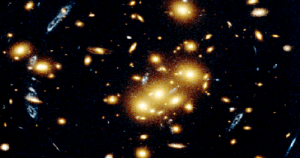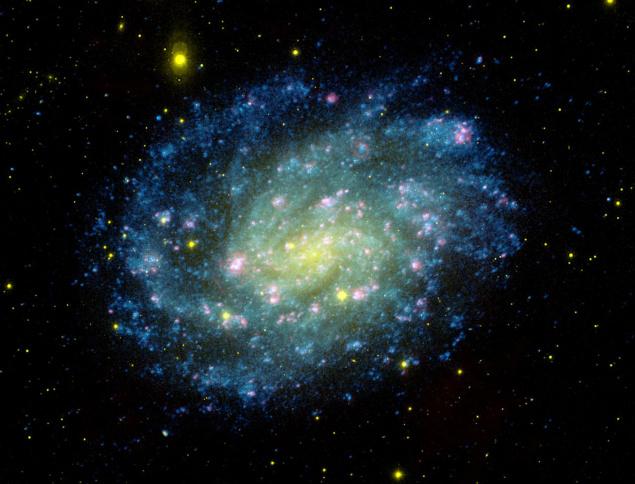
Most Distant And Massive Galaxy Cluster Discovered
Astronomers have detected a massive, sprawling, churning galaxy cluster that formed only 3.8 billion years after the Big Bang. The cluster itself is named IDCs J1426.5+3508 (or IDSCS 1426) is about 1,000 times more massive than our Milky Way galaxy.
The early universe was a chaotic mess of gas and matter that only began to coalesce into distinct galaxies hundreds of millions of years after the Big Bang. Astronomers at Massachusetts Institute of Technology (MIT), the University of Missouri and the University of Florida have detected IDCS J1426.5+3508 (or IDCS 1426), the most massive cluster of galaxies yet discovered in the first 4 billion years after the Big Bang.

“We had some sense of how massive and distant it was, but we weren’t fully convinced,” says Michael McDonald, assistant professor of physics and a member of MIT’s Kavli Center for Astrophysics and Space Research. “These new results are the nail in the coffin that proves that it is what we initially thought.”
Located 10 billion light years from Earth and potentially comprising thousands of individual galaxies, the mega structure is about 250 trillion times more massive than the Sun, or 1,000 times more massive than the Milky Way galaxy.
IDCS 1426 appears to be undergoing a substantial amount of upheaval. The researchers observed a bright knot of X-rays slightly off-center in the cluster, indicating that the cluster’s core may have shifted some hundred thousand light-years from its center.
The scientists believe that the core may have been dislodged from a violent collision with another massive galaxy cluster, causing gas within the cluster to slosh around like wine in a glass.
Such a collision may explain how IDCS 1426 formed so quickly in the early universe, at a time when individual galaxies were only beginning to take shape, said Michael McDonald, assistant professor at MIT. “In the grand scheme of things, galaxies probably didn’t start forming until the universe was relatively cool, and yet this thing has popped up very shortly after that,” he added.
“Our guess is that another similarly massive cluster came in and sort of wrecked the place up a bit. That would explain why this is so massive and growing so quickly. It’s the first one to the gate, basically.”
The findings reveal a bit more about galaxy clusters and show how they first formed ini the early universe. Galaxy clusters are conglomerations of hundreds to thousands of galaxies bound together by gravity. They are the most massive structures in the universe, and those located relatively nearby, such as the Virgo cluster, are extremely bright and easy to spot in the sky.
However, finding galaxy clusters that are farther away in space and further back in time is a difficult and uncertain exercise, researchers said. In 2012, scientists using NASA’s Spitzer Space Telescope first detected signs of IDCS 1426.
The findings are published in The Astrophysical Journal.